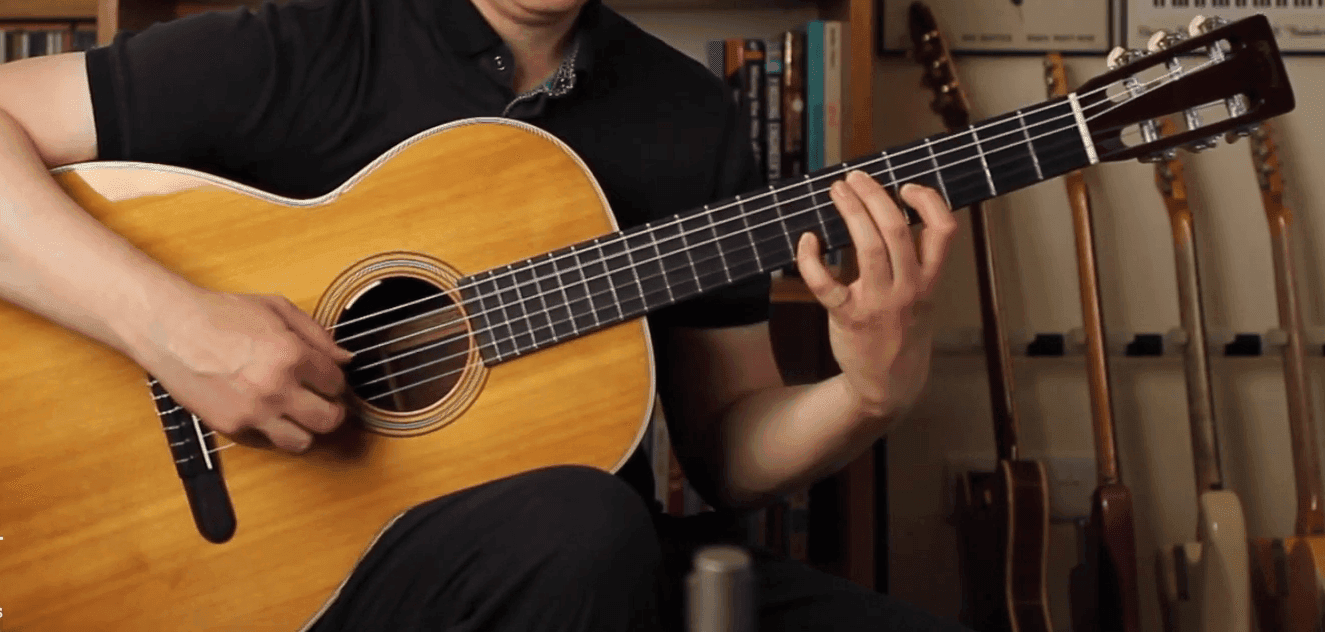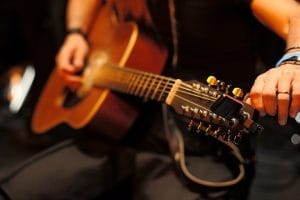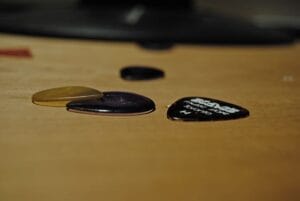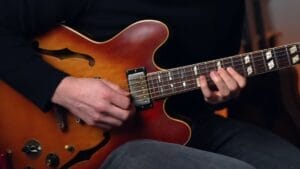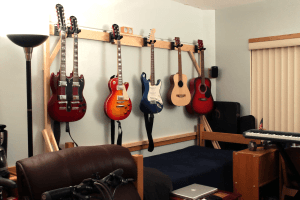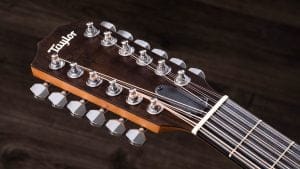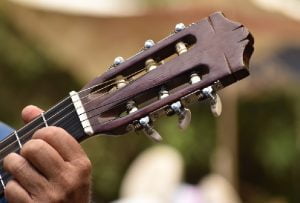Table of Contents
Martin is, without a doubt, the biggest name on the list of acoustic guitar manufacturers. Any steel string player who can afford a Martin will own it.
While Martin’s design and craftsmanship of steel string guitars are unparalleled, they’ve never ventured too deep into the world of classical guitars.
Nonetheless, several Martin classical guitars exist, and I am pleased to introduce them to you.
If you are a newbie and looking for your very first guitar, we suggest you check out our list of guitars for beginners!
Martin 000C12-16E Nylon Cutaway Acoustic-Electric Guitar Natural – 2199$
The Martin 000C12-16E is an extraordinary nylon-string acoustic-electric guitar, merging Martin’s rich heritage of craftsmanship with contemporary design and electronics. This model offers musicians an exciting opportunity to explore the unique tonal textures of nylon guitar while enjoying the exceptional playability and quality for which Martin is renowned. This is the only nylon model listed on Martin’s official website to be currently in production.
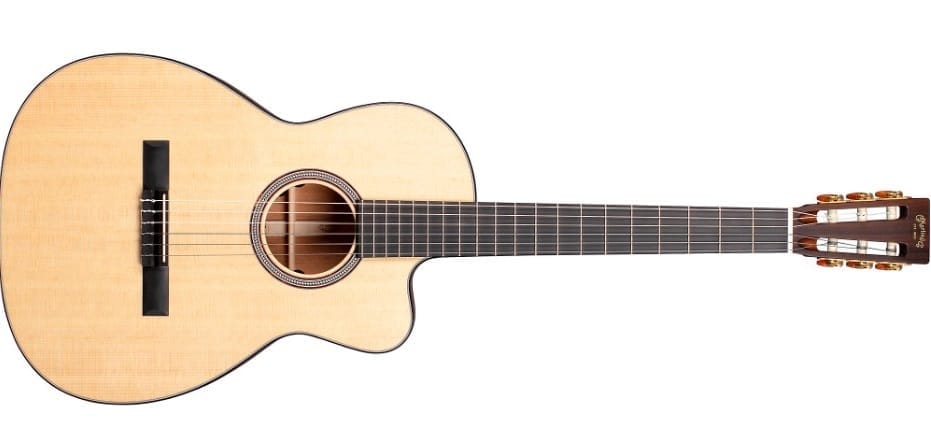
Key Features
Body Design
The 000C12-16E showcases Martin’s 000 body shape, which provides a comfortable, ergonomic playing experience. This body design balances the guitar’s projection and resonance while ensuring playability.
Tonewood
The guitar boasts a solid Sitka spruce top, known for its responsiveness and dynamic range. Its back and sides are made of mahogany, offering a warm, rich tone with a pronounced midrange presence.
Long scale length
The model has a whopping 26.44” scale length, allowing ample space between frets for easier fingering.
Electronics
Equipped with Martin’s Fishman Matrix VT Enhance NT2 electronics, this model ensures that its captivating 12-string tones can be accurately amplified and enjoyed on stage or in the studio. The onboard electronics preserve the instrument’s natural sound while providing comprehensive tonal control.
Craftsmanship
True to Martin’s legacy, the 000C12-16E is crafted with meticulous attention to detail. It features high-quality materials, elegant inlays, and a protective finish that enhances its aesthetic appeal.
Pros and Cons of the Martin 000C12-16E
Pros
- Comfortable 000 body shape for extended playability.
- Onboard Fishman electronics for quality amplification.
Cons
- 12-string guitars may require more frequent tuning and maintenance.
- Slightly higher cost compared to some 6-string acoustic guitars.
Unavailable Classical Guitars of Martin
Martin 000C – 1800$
The Martin 000C is a small-bodied nylon-string guitar known for its superior craftsmanship and rich tonal qualities. Martin has discontinued the classical model, but previously produced ones can be found.
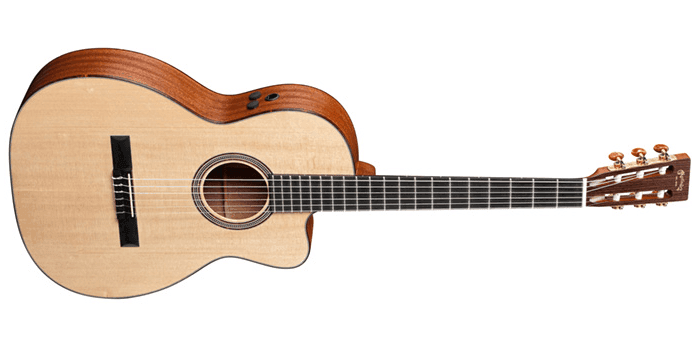
Key Features
Body Design
The 000C features a comfortable 000 body shape, perfect for those who prefer a smaller, more ergonomic design. This style enhances playability and comfort.
Tonewoods
The top is constructed with solid Sitka spruce, offering vibrant resonance and responsiveness. The Indian rosewood back and sides complement this, creating a warm, rich, and well-balanced tonal character.
Cutaway
Many versions of the 000C incorporate a Venetian cutaway, which makes access to the upper frets effortless and improves its versatility for various musical styles.
Nylon Strings
The guitar is strung with nylon strings, which provide a mellower, warmer tonal palette suitable for classical and fingerstyle playing. They also offer a traditional, mellow sound.
Electronics
Some models come with built-in electronics, making them ideal for live performances and recording, with the ability to amplify the guitar while preserving its natural, warm acoustic qualities.
Craftsmanship
Known for meticulous attention to detail and top-notch build quality, Martin ensures that the 000C maintains this tradition, complete with exquisite inlays and a high-quality finish.
Pros and Cons of the Martin 000C
Pros
- The body is small and comfortable to hold
- Fusion of classical design with modern cutaway for convenience
- Hi-fidelity built-in electronics
Cons
- Potential higher cost compared to some classical guitars.
- Cutaway design may alter the traditional appearance (based on personal preference).
Limited Edition Guitars
Throughout their centuries-old history, Martin has crafted limited-edition vintage classical guitars. Such notable models include:
Vintage 1971 Martin 00-18C
The Vintage 1971 Martin 00-18C is a classic and highly sought-after nylon-string acoustic guitar representing a beautiful musical history piece. It was a limited edition model, now only available second-hand. A timeless piece of work.
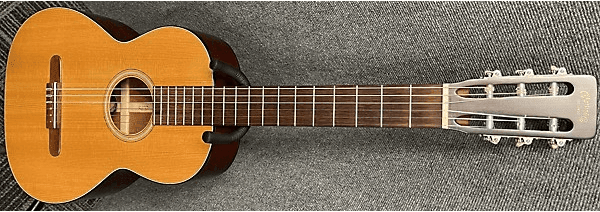
Key Features
Body Design
The 00-18C features the 00 body shape, which is slightly smaller and more comfortable than more prominent classical guitars. This design is ideal for fingerstyle playing.
Tonewoods
This vintage Martin model sports a solid Sitka spruce top, known for its responsive and balanced sound. The back and sides are crafted from mahogany, imparting a warm tone that complements the spruce top.
Vintage Aesthetics
The 1971 00-18C often showcases vintage-style appointments, including herringbone top purfling, an ebony fingerboard and bridge, and a slotted headstock, which enhances its nostalgic appeal.
Want to know more about guitar headstock? Click here!
Open Gear Tuning machines
The open-gear tuners assure stability, precision in tuning, and ease of use.
Craftsmanship
Martin’s commitment to craftsmanship is evident in this vintage model. Each 1971 00-18C is a testament to the company’s dedication to detail and precision.
Vintage 1954 Martin 00-28G
The Vintage 1954 Martin 00-28G is a highly esteemed and collectible steel-string acoustic guitar from an era renowned for exceptional craftsmanship. Martin Guitar Company’s 00-28 series, with its iconic combination of small body size and premium tonewoods, has long been coveted by guitar enthusiasts and players seeking vintage excellence.
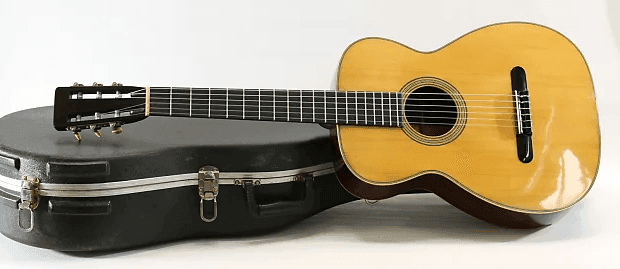
Key Features
Body Design
The 00-28G features a compact and comfortable 00 body size, making it a versatile instrument for various playing styles. Its smaller size delivers a focused, balanced tonal response.
Tonewoods
This vintage Martin model typically includes a solid Sitka spruce top, known for its clarity and projection, paired with gorgeous Brazilian rosewood back and sides. Brazilian rosewood is highly prized for its rich, resonant, and complex tonal qualities.
Vintage Aesthetics
1954 00-28G exudes vintage charm with classic appointments such as herringbone top purfling, an ebony fingerboard and bridge, and a slotted headstock. These vintage details contribute to its visual allure and authenticity.
Historical value
The guitar is 69 years old today, making it a relic of a long-gone age. This makes its price undeterminable by wood quality or craftsmanship alone.
How do guitar bodies change with age?
Guitar bodies can change with age, significantly impacting the instrument’s tone, playability, and appearance.
These changes are often more pronounced in acoustic guitars but can also affect electric guitars to some extent. Here are some of the common ways in which guitar bodies change with age:
Tonewood Aging
Over time, the tonewoods used in the guitar’s construction, such as the top, back, and sides, can mature and mellow, enhancing the instrument’s tonal qualities. This aging process can result in a richer, more resonant, and more complex sound.
Finish and Patina
Finish Cracking
As the guitar ages, its finish can develop tiny cracks or crazing lines. This is more common in nitrocellulose finishes, and while it may be seen as a cosmetic flaw, it can also contribute to the guitar’s vintage appeal.
Patina
The exposed wood surfaces can develop a patina over time, often called “aging” or “yellowing.” This can give the guitar a vintage look and is especially noticeable on acoustic guitar tops.
Binding and Purfling
Due to changes in temperature and humidity over the years, the binding around the edges of the guitar can sometimes separate or show signs of shrinking. While this can affect the guitar’s appearance, it’s generally not a structural issue.
Neck and Fingerboard
Neck Settling
Over time, a guitar’s neck can settle into a slightly different angle. This can affect playability, but it’s often correctable through neck adjustments.
Fret Wear
As the guitar is played, the frets can wear down, affecting playability and intonation. Periodic fret dressing or refretting may be necessary to maintain optimal playability.
Bracing and Structural Changes:
Brace Alterations
The bracing under the top can undergo subtle changes in acoustic guitars, impacting the guitar’s tone and resonance. Fluctuations may influence these changes in humidity and temperature.
Age-Related Cracks
Changes in humidity and temperature can cause guitars to develop cracks in the wood. These cracks can affect the instrument’s structural integrity and tone if not properly repaired.
Repair Work
Older guitars often have signs of past repair work, including repaired cracks, reglued joints, and replaced parts. The quality of these repairs can vary and influence the guitar’s value and sound.
Tone and Sound Changes
Tonal Maturation
The guitar’s tone can mature with age and become more balanced and resonant. Some vintage guitars are highly sought after for their well-aged sound.
Playability:
Action and Feel
The guitar’s playability can change with age as the neck settles, frets wear down, and other factors come into play. Periodic setup adjustments can help maintain optimal playability.
Why Vintage Classical Guitars Are Highly valued?
Vintage guitars are highly valued for several reasons, including their historical significance, rarity, craftsmanship, and often superior tonal qualities. Here are some key factors that contribute to the high value of vintage guitars:
Historical Significance
Vintage guitars are often associated with important moments in the history of music. Some iconic models have been played by legendary musicians and featured in famous recordings, adding to their historical allure.
Craftsmanship
Many vintage guitars were handcrafted by skilled luthiers with meticulous attention to detail. The craftsmanship and build quality of these instruments often surpass modern mass-produced guitars.
Tonal Quality
Vintage guitars may exhibit tonal characteristics that musicians highly prize. As the wood used in these guitars has aged and matured, it can produce a richer, more complex, and well-balanced sound.
Rarity
Vintage guitars are often rare due to limited production runs, discontinuation, or even the passage of time. Specific vintage models are sought after because they are hard to find.
Materials
Vintage guitars may feature no longer readily available or harvested tonewoods, contributing to their unique sound and desirability. This can be especially true for older, now-protected wood species.
Collectibility
Vintage guitars are often collectible items for enthusiasts and investors. Collectors are willing to pay a premium for instruments that are part of their collection, increasing demand and value.
Scarcity
As vintage guitars age, they may become more scarce due to damage, loss, or irreversible alterations. This scarcity can drive up the prices of existing examples.
Cultural and Iconic Value
Some vintage guitars are associated with specific musical movements, genres, or cultural phenomena, making them even more valuable to collectors and enthusiasts.
Investment Potential
Many collectors and investors see vintage guitars as a sound investment. They often appreciate value over time, making them an attractive asset class.
Unique Features
Vintage guitars may have unique or unusual features that set them apart from modern instruments, further enhancing their appeal.
Conclusion
Martin’s classical guitar models may be few in variety, and most are no longer in production, but they are works of art that deserve a place in your collection. Vintage models are especially rare beauties holding significant historical value.
Martin Classical Guitar FAQ
Yes, Martin has made a handful of classical guitars over the decades. Most of them are out of production, though. The Martin 000C12-16E Nylon is still being made.
Both of them are famed for their premium quality models. But it’s impossible to say which is better unless you compare specific models.
Yes, Martin has made a handful of nylon guitars over the decades. Most of them are out of production, though. Some are available secondhand as vintage models.
Francisco Tárrega (1852–1909), is a Spanish composer often referred to as the “father of classical guitar.” One of his most well-known pieces, Recuerdos de la Alhambra, is considered standard repertoire for classical guitarists.
The oldest classical guitar is the Vihuela. The written history of the classical guitar can be traced back to the early 16th century with the development of the vihuela in Spain. While the lute was then becoming popular in other parts of Europe, the Spaniards did not take to it well because of its association with the Moors.
- The Best 8 Cheap Bass Guitars - February 6, 2025
- Top 10 Best Budget Bass Guitars for Beginners - February 6, 2025
- Best 5 String Bass Guitars For Every Price Point - February 6, 2025

